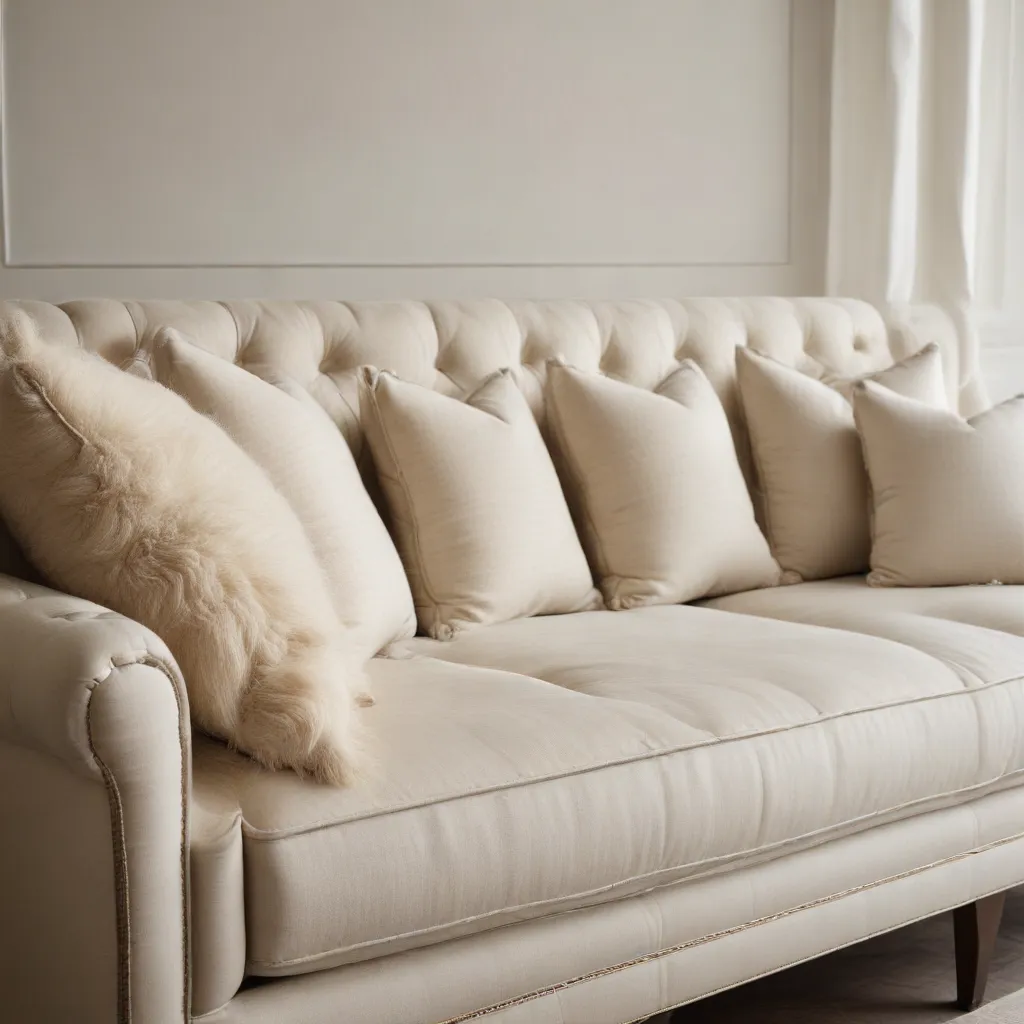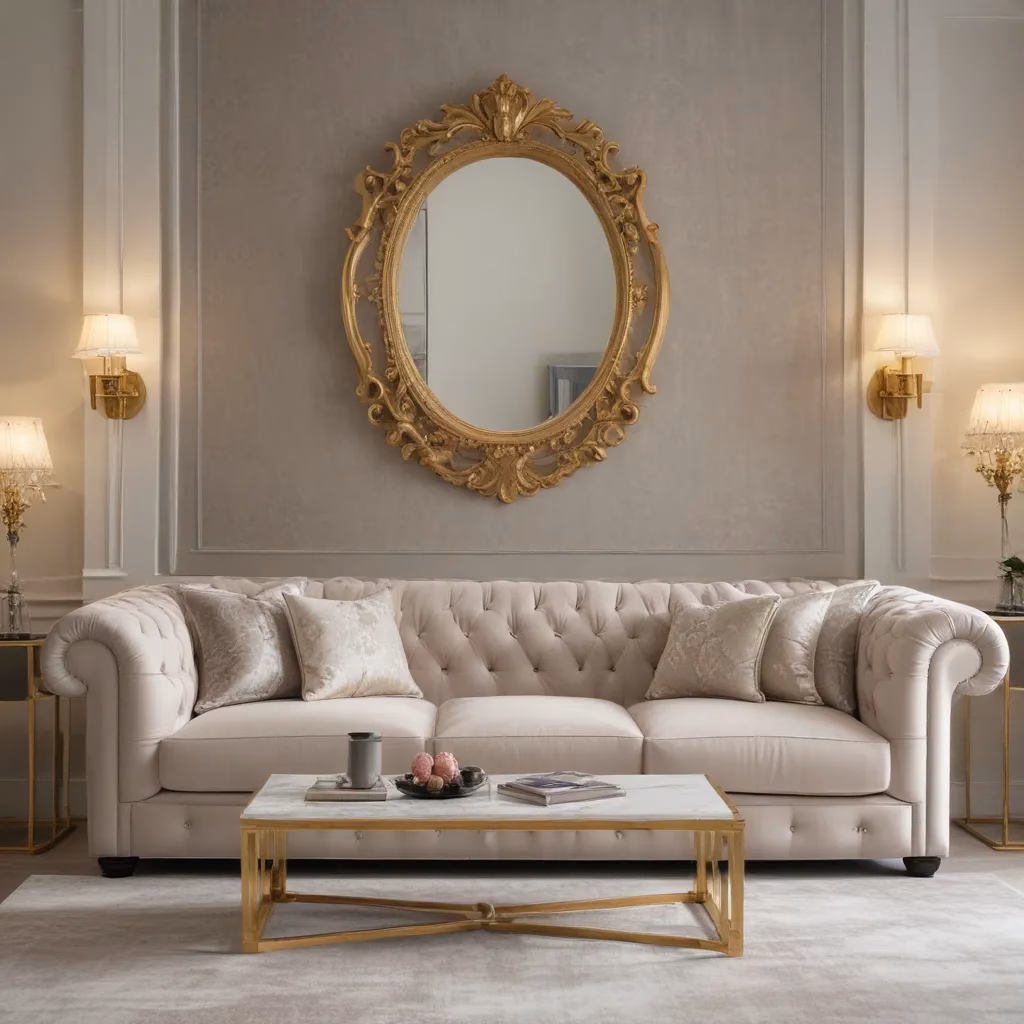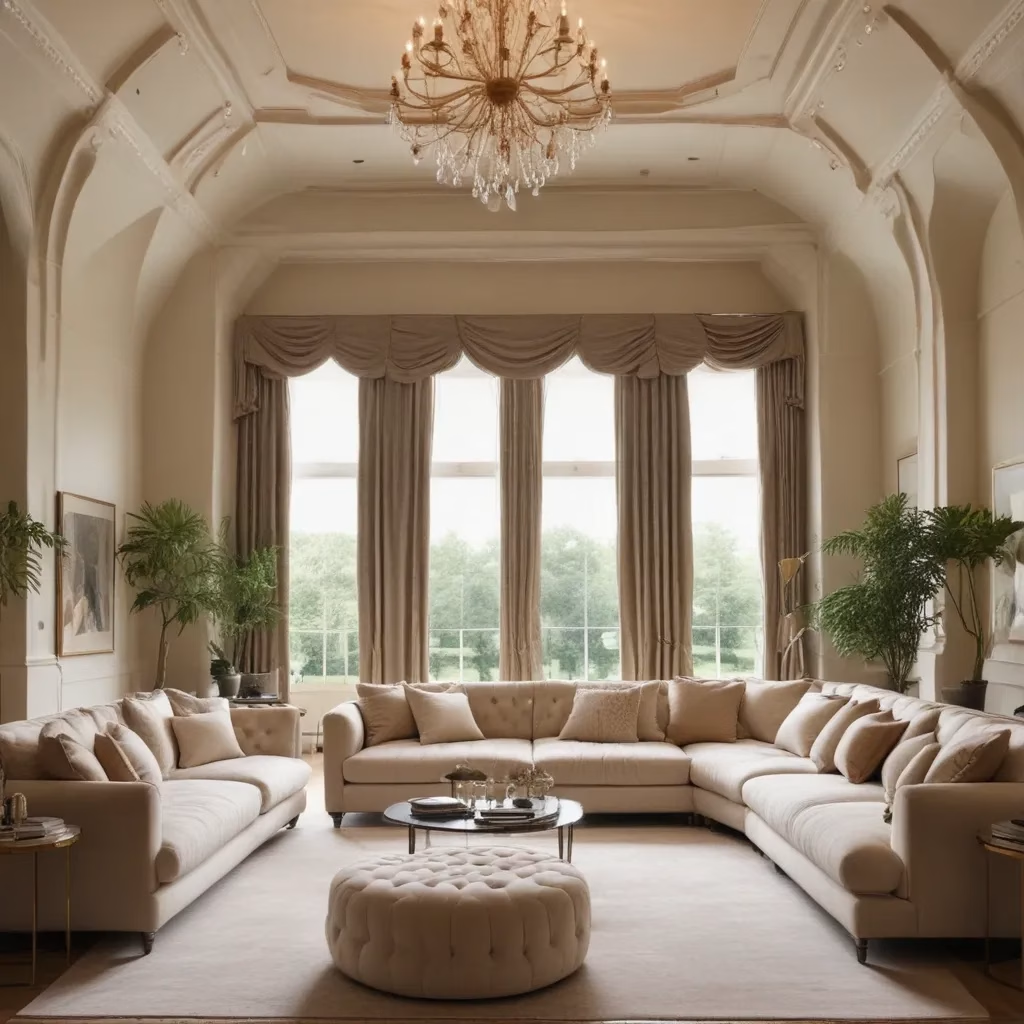
The Art of Sofa Selection: Comfort Meets Style
Choosing the perfect sofa is an art form that combines comfort, aesthetics, and practicality. As a furniture specialist, I’ve guided countless homeowners and interior designers through this process, and I can tell you that it’s both exciting and challenging. The key is to strike a balance between your personal taste and the functional needs of your space.
When you’re in the market for a new sofa, start by considering the room where it will live. Is it a formal living room that sees occasional use, or a family room that’s the hub of daily activity? The answer to this question will help determine the level of durability you need in your upholstery fabric and the overall construction of the piece.
Next, think about your lifestyle. Do you have children or pets? If so, you’ll want to look for fabrics that are stain-resistant and easy to clean. Leather can be a great option for families, as it’s durable and ages beautifully with proper care. On the other hand, if you’re looking for a sofa for a child-free household, you might opt for more delicate fabrics like velvet or linen.
Size is another crucial factor in sofa selection. I always recommend measuring your space carefully before you start shopping. There’s nothing worse than falling in love with a sofa only to find it doesn’t fit through your doorway or overwhelms your room. Remember to leave enough space around the sofa for traffic flow and other furniture pieces.
Understanding Upholstery: Fabrics That Stand the Test of Time
When it comes to upholstery, the fabric you choose can make or break your sofa’s longevity and appearance. As someone who’s seen countless sofas over the years, I can attest to the importance of selecting the right material for your needs.
Synthetic fabrics like polyester and nylon are popular choices for their durability and resistance to staining. These materials can withstand heavy use and are often easier to clean than natural fibers. However, they may not have the same luxurious feel as some natural options.
Natural fibers such as cotton and linen offer breathability and comfort but may require more maintenance. They’re prone to wrinkling and can be more susceptible to staining. Wool is another natural option that’s durable and naturally resistant to staining, but it can be more expensive.
For those seeking a blend of durability and luxury, microfiber is an excellent choice. This synthetic material mimics the feel of suede but is much easier to clean and maintain. It’s resistant to water and stains, making it ideal for households with children or pets.
When selecting your upholstery fabric, consider not just the look and feel, but also how it will perform over time. Will it pill or fade? How will it handle spills and stains? These are questions I always encourage my clients to ask before making their final decision.
The Science of Comfort: Cushion Construction and Support
While the aesthetics of a sofa are important, comfort is paramount. The construction of the cushions and the support system of the sofa play a huge role in how comfortable it will be over time. As a furniture specialist, I’ve learned that what’s inside a sofa is just as important as what’s on the outside.
Cushion fillings come in various materials, each with its own properties. Foam is a common choice, offering a firm seat that retains its shape well. High-density foam will provide more support and longevity than lower-density options. For a softer feel, down-filled cushions are luxurious but require regular fluffing to maintain their shape.
A popular middle ground is a combination of foam core wrapped in down or polyester fiberfill. This provides the structure of foam with the softness of down, creating a comfortable seat that holds its shape well.
The support system of the sofa is equally important. A high-quality sofa will have a sturdy frame, typically made of kiln-dried hardwood. This prevents warping and cracking over time. The suspension system, which supports the cushions, can be made of springs, webbing, or a combination of both. Eight-way hand-tied springs are often considered the gold standard, providing even support and longevity.
Remember, a sofa that looks great but feels uncomfortable will ultimately be a disappointment. I always encourage my clients to sit, lie down, and really test out a sofa before making a purchase. Your comfort should be the top priority.
Sofa Styles: From Classic to Contemporary
The style of your sofa can set the tone for your entire room. As a furniture specialist, I’ve seen trends come and go, but certain styles have stood the test of time. Let’s explore some popular sofa styles and how they can fit into different interior design schemes.
The Chesterfield sofa, with its distinctive tufted back and rolled arms, is a classic that never goes out of style. It’s perfect for traditional or formal settings but can also add a touch of elegance to more modern rooms. I’ve seen Chesterfields work beautifully in both leather and fabric upholstery.
For a more casual, laid-back look, the sectional sofa is a popular choice. These versatile pieces can be configured to fit your space and provide ample seating for large families or frequent entertainers. Sectionals come in various styles, from sleek and modern to cozy and traditional.
Mid-century modern sofas, characterized by their clean lines and tapered legs, have seen a resurgence in popularity in recent years. These sofas work well in both vintage-inspired and contemporary interiors. Their simple designs make them versatile and easy to incorporate into various decor styles.
For small spaces, I often recommend a loveseat or apartment-sized sofa. These smaller pieces can provide comfortable seating without overwhelming a room. Many manufacturers now offer scaled-down versions of their popular sofa styles to accommodate smaller living spaces.
When choosing a sofa style, consider not just the current trends but also the overall design of your home. A sofa is a long-term investment, so you’ll want to choose a style that you’ll be happy with for years to come.
Color Theory in Sofa Selection: Making a Statement or Blending In
The color of your sofa can have a significant impact on the overall feel of your room. As a furniture specialist, I’ve helped many clients navigate the sometimes tricky waters of color selection. Here are some insights I’ve gained over the years.
Neutral colors like beige, gray, and cream are always popular choices for sofas. They provide a versatile base that can work with a variety of decor styles and color schemes. If you like to change your decor frequently, a neutral sofa allows you to update your look with different throw pillows and accessories.
On the other hand, a bold-colored sofa can serve as a striking focal point in your room. A rich blue velvet sofa, for example, can add drama and sophistication to a living room. Just be sure you’re committed to the color before making such a bold choice.
When selecting a color, consider the other elements in your room. If you have patterned curtains or a colorful rug, you might want to choose a sofa that complements these pieces without competing with them. Conversely, if your room is mostly neutral, a colorful sofa can add a much-needed pop of color.
Remember that light colors can make a room feel larger and airier, while darker colors can create a cozy, intimate atmosphere. The color of your sofa can also affect how much dirt and wear show over time. Lighter colors may show stains more easily, while darker colors can fade in direct sunlight.
The Importance of Proper Sofa Maintenance
As a furniture specialist, I can’t stress enough how important proper maintenance is for extending the life of your sofa. With the right care, a high-quality sofa can last for decades, becoming a cherished piece in your home.
Regular vacuuming is essential for all types of upholstery. Use the upholstery attachment on your vacuum cleaner to remove dust and debris from the surface of your sofa at least once a week. Pay special attention to the crevices where crumbs and dirt can accumulate.
For fabric upholstery, address spills immediately to prevent staining. Blot (don’t rub) the spill with a clean, white cloth to absorb as much liquid as possible. For stubborn stains, consult the manufacturer’s care instructions before using any cleaning products.
Leather sofas require different care. Dust regularly with a soft, dry cloth and condition the leather every 6-12 months to prevent cracking and maintain its suppleness. Avoid placing leather sofas in direct sunlight, as this can cause fading and drying.
Rotate and flip your cushions regularly to ensure even wear. This is especially important for down-filled cushions, which should be fluffed daily to maintain their shape.
Consider using arm covers and throws to protect high-wear areas of your sofa. These can be easily washed or replaced, extending the life of your upholstery.
Sofa Placement: Maximizing Space and Flow
The placement of your sofa can significantly impact the functionality and aesthetic of your room. As a furniture specialist, I’ve seen how the right placement can transform a space, while poor placement can make even the most beautiful sofa feel out of place.
In most living rooms, the sofa serves as the anchor piece. A common arrangement is to place the sofa facing the room’s focal point, which might be a fireplace, a large window with a view, or a television. This creates a natural gathering spot for conversation or entertainment.
If your room is large enough, consider floating your sofa in the center of the room rather than pushing it against a wall. This can create a more intimate seating area and improve traffic flow around the room.
For open-plan living spaces, use your sofa to define separate areas. For example, a sectional sofa can create a boundary between a living area and a dining area in a large, open room.
Remember to leave enough space around your sofa for easy movement. As a general rule, allow at least 18 inches between the sofa and a coffee table, and 30-36 inches for major traffic paths.
In smaller rooms, consider a loveseat or apartment-sized sofa instead of a full-sized one. These smaller pieces can provide comfortable seating without overwhelming the space.
Accessorizing Your Sofa: The Finishing Touches
Once you’ve selected and placed your perfect sofa, it’s time to add the finishing touches. As a furniture specialist, I’ve seen how the right accessories can elevate a sofa from simply functional to truly spectacular.
Throw pillows are an easy way to add color, texture, and personality to your sofa. Mix and match different sizes, shapes, and patterns for a curated look. As a general rule, odd numbers of pillows (like three or five) tend to look more balanced than even numbers.
A throw blanket can add both style and comfort to your sofa. Choose a texture that contrasts with your upholstery fabric for visual interest. For example, a chunky knit throw looks great on a smooth leather sofa.
Consider adding a side table or two next to your sofa. These provide a convenient spot for drinks, books, or a reading lamp. The height of your side table should be close to the height of your sofa’s arms for easy reach.
A well-chosen area rug can help define your seating area and add warmth to your room. Make sure the rug is large enough to accommodate your sofa and any accompanying chairs.
Remember, less is often more when it comes to accessories. You want your sofa to shine, not be overwhelmed by too many decorative elements.
The Future of Sofa Design: Trends to Watch
As a furniture specialist, I’m always excited to see how sofa design evolves to meet changing lifestyles and aesthetic preferences. Here are some trends I’ve been noticing that I think will shape the future of sofa design.
Modular sofas are gaining popularity for their versatility. These pieces can be rearranged to suit different needs, making them perfect for modern, flexible living spaces. Some modular sofas even come with built-in storage or charging stations for electronics.
Sustainability is becoming increasingly important in furniture design. Look for sofas made with eco-friendly materials like recycled fabrics or sustainably sourced wood. Some manufacturers are also focusing on creating sofas that can be easily disassembled and recycled at the end of their life.
Smart furniture is another emerging trend. Imagine a sofa that can adjust its firmness based on your preferences, or one with built-in speakers for an immersive entertainment experience. While these features are still relatively rare, I expect to see more integration of technology in sofa design in the coming years.
In terms of aesthetics, I’m seeing a return to softer, more organic shapes in contrast to the stark, geometric designs that have been popular in recent years. Curved sofas and rounded edges are making a comeback, adding a touch of softness to interiors.
Making Your Sofa Purchase: Tips for a Smooth Experience
Buying a sofa is a significant investment, and as a furniture specialist, I want to share some tips to ensure you have a smooth and satisfying purchase experience.
First, do your research before you start shopping. Look at different styles online and in magazines to get an idea of what you like. Make a list of your must-have features and any concerns you have (like durability for pets or children).
When you’re ready to shop, visit stores in person if possible. Sitting on a sofa is the best way to gauge its comfort. Bring along fabric swatches or paint chips from your room to help visualize how the sofa will fit into your space.
Don’t be afraid to ask questions. A good salesperson should be able to tell you about the construction of the sofa, the materials used, and care instructions. If they can’t answer your questions, that might be a red flag.
Always check the return policy and warranty before making a purchase. Some stores offer in-home trials, which can be helpful if you’re unsure about a sofa.
Consider the delivery process. Will the sofa fit through your doorways and up any stairs? Some sofas come with removable legs or even disassemble for easier delivery.
Finally, don’t rush your decision. A sofa is a long-term investment, so take your time to find one that you truly love and that meets all your needs.
Conclusion: Your Sofa, Your Sanctuary
In conclusion, your sofa is more than just a piece of furniture – it’s the heart of your living space, a place of comfort and relaxation. As a furniture specialist, I’ve seen how the right sofa can transform a house into a home.
Remember, there’s no one-size-fits-all solution when it comes to sofas. What works for one person might not work for another. The key is to consider your specific needs, lifestyle, and aesthetic preferences when making your choice.
Whether you opt for a classic Chesterfield, a modern sectional, or something in between, investing in a high-quality sofa and caring for it properly will ensure you have a comfortable and stylish seating option for years to come.
At Sofa Spectacular, we’re passionate about helping our customers find their perfect sofa. We believe that everyone deserves a sofa that not only looks great but also provides lasting comfort and durability.
So, as you embark on your sofa-buying journey, remember to take your time, do your research, and most importantly, choose a sofa that feels like home to you. After all, at the end of a long day, there’s nothing quite like sinking into your perfect sofa and letting the stresses of the world melt away.



